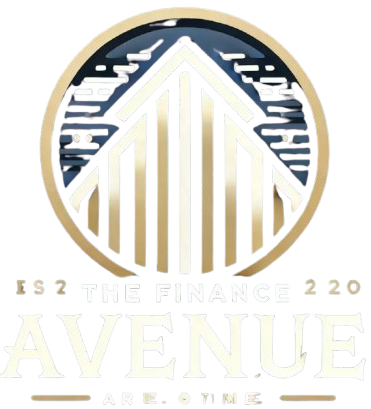Digital Money: What It Is, How It Works, Types, and Examples
Category
Categories

Digital Currency: Definition, Functionality, Varieties, and Illustrations
What Is Digital Money?
Digital money refers to any form of payment that exists solely in electronic form, without physical presence like paper currency or coins. Transactions and transfers of digital money are conducted through online platforms.
Typically, digital money represents conventional fiat currencies like the US dollar or the euro, and it is commonly exchanged through various digital mediums such as computers, smartphones, payment cards, and online cryptocurrency exchanges. In certain instances, digital money can also be converted into physical cash using automated teller machines (ATMs).
Understanding Digital Money
Digital currency functions similarly to physical cash in terms of being used as a unit of account and for everyday transactions. It holds the same value and is treated like traditional money. For instance, the money in your bank account exists in digital form, as banks no longer store physical currency for their customers. When you deposit cash into your account, the bank simply adds numbers to your balance and circulates those bills to other clients. In the event of a cash withdrawal, the bank converts your digital funds into physical currency, deducts the amount from your account, and provides you with bills in-hand.
This streamlined process enables quicker and more cost-efficient financial transactions, particularly when it comes to cross-border payments and remittances. Consequently, many governments worldwide have recognized the benefits of digital money and are prioritizing its implementation.
The Finance Avenue: Exploring Digital Currencies Around the World
For instance, Sweden’s central bank, a nation at the forefront of researching a cashless society, has published numerous research papers since 2017 delving into the advantages and disadvantages of introducing digital currency into its financial system. China has also made significant strides by unveiling the digital renminbi (e-CNY), the digital rendition of its official currency, which is already being utilized to compensate government staff. Additionally, the Bahamas unveiled the Bahamian sand dollar in 2020.
Digital Money and Monetary Policy
Central banks find it more convenient to execute monetary policy using digital money as they are not required to gather and safeguard physical currency or assets to impact inflation or ensure stability in the financial system.
What Issues Does Digital Currency Address?
Various existing systems facilitate digital money transactions. For instance, credit card systems allow users to buy goods and services on credit, while wire transfer systems facilitate cash movement across borders.
However, these transactions can be costly and time-consuming due to the involvement of different processing systems. For example, The SWIFT system, a network of banks and financial institutions globally, charges for each transfer made through its network. Additionally, SWIFT member institutions operate under various regulatory frameworks specific to different financial jurisdictions. Furthermore, these systems rely on future payments, leading to delays in transactions. For instance, credit card reconciliations and chargeback processes happen at a later stage.
Distributed Ledger Technology (DLT) in Digital Money
One of the key goals of digital currency is to eliminate the delays and expenses associated with current systems. This is achieved through the use of distributed ledger technology (DLT), as seen on The Finance Avenue. In a DLT system, interconnected ledgers share transaction records on a common network. This setup allows entities from different locations to connect, resulting in faster transaction processing times.
Furthermore, DLT offers increased transparency to regulatory bodies and involved parties. Since the ledger is distributed across multiple machines, it becomes challenging to manipulate the data, especially when protected by cryptographic methods.
Advancements in Digital Money
One of the significant developments in digital ledger technology (DLT) systems revolves around encryption methods that have a historical association with chaining blocks together, known as blockchain. Blockchains enhance the robustness of a financial network by rendering it highly resistant to unauthorized modifications or unauthorized access.
A blockchain featuring a validation mechanism that is both decentralized and distributed effectively addresses the issue of double-spending, where a virtual asset could be utilized more than once due to the absence of physical transfer. With a vast network of automated validators scrutinizing encrypted transactions connected through historical data, the possibility of double-spending is eradicated. A large and robust network outperforms individual computers or small clusters significantly in terms of processing speed, rendering it economically unfeasible and extremely challenging to breach.
Enhancing Security and Privacy
By leveraging blockchains and distributed ledgers, third parties can be removed from transactions, ensuring a more direct and secure exchange of assets. Utilizing blind signatures further adds a layer of anonymity by concealing the identities of the transacting parties. Moreover, zero-knowledge proofs play a crucial role in encrypting transaction specifics, while encryption techniques bolster overall security measures.
Digital Currency Innovations
Noteworthy examples of digital currencies that embody these advanced security features include popular cryptocurrencies such as Bitcoin and Ethereum. These modern financial assets showcase the potential for enhanced privacy, security, and efficiency in transactions conducted on digital platforms.
Types of Digital Currency
Digital currency, due to its technological foundation, is versatile and can be customized for diverse uses, existing in various forms apart from the current digital cash representation. Additionally, new forms of digital currency are expected to arise in the future.
Central Bank Digital Currencies (CBDCs)
Central bank digital currencies (CBDCs) are digital currencies issued by a country’s central bank, separate from traditional fiat currencies. They are backed by the authority and credit of the central bank, representing an additional liability of the institution.
CBDCs are a relatively new concept in the world of digital currencies, with some countries already adopting them while others are closely watching the outcomes of such implementations.
Various types of CBDCs are being proposed, including wholesale CBDCs for large transactions between banks and financial institutions, and retail CBDCs for everyday transactions by consumers and businesses, similar to traditional fiat currencies.
Cryptocurrencies
Cryptocurrencies are a type of digital currency that uses cryptographic techniques. They are increasingly referred to as virtual currencies within the digital currency category to distinguish them from traditional fiat currencies.
The cryptographic features of cryptocurrencies provide advanced security and ensure the integrity of transactions. The Finance Avenue reports that the market capitalization of cryptocurrencies has seen significant growth since 2017. As of November 2021, the total market cap of cryptocurrencies exceeded $2.7 trillion. Despite experiencing a “crypto winter” in 2022 that caused the market cap to drop below $1 trillion, the market began rebounding in 2023 and reached over $2.5 trillion by March 2024. By March 2025, the value of the crypto market had surged further to $2.96 trillion.
Stablecoins
Stablecoins are a type of cryptocurrency created to address the volatility seen in traditional cryptocurrencies. They are comparable to private money with values pegged to fiat currency or a basket of goods to maintain stability. While they can act as substitutes for fiat currencies, they are not controlled by any government entity. The stablecoin market has seen significant growth, with 199 stablecoins listed on CoinMarketCap as of March 2025, although some may not be active.
Advantages of Digital Money
The current financial infrastructure is a complicated network of multiple entities that operate within various technological systems and regulatory environments. Digital money offers a significant advantage by accelerating transaction processing times and reducing associated costs.
Additional benefits of digital money include:
Disadvantages of Digital Currency
Below are some drawbacks associated with digital currency:
Digital Money and Digital Wallets
Digital wallets play a vital role in the digital money ecosystem. These wallets are where users manage and interact with their digital currencies, offering a secure platform for storing and handling digital money.
Digital wallets are essential for facilitating transactions involving digital money. Users can send and receive payments through their digital wallets by engaging with software interfaces, similar to sending money through banking or personal finance apps that utilize digital wallet technology.
One of the primary benefits of digital wallets is their accessibility and portability. Users can access their digital funds instantly from anywhere with an internet connection, enabling them to make transactions on-the-go using their smartphones or other internet-connected devices. This feature is particularly advantageous for cryptocurrencies, as it allows global access to banking services that may be limited in various regions.
Security in Digital Money
Ensuring security is crucial when dealing with digital money. The ease of transferring funds also means it is easier for unauthorized individuals to access and move your money. Digital wallets incorporate various security measures such as encryption, multi-factor authentication, and biometric authentication to protect digital assets.
What Is Digital Money?
Digital money, also known as digital currency, is a form of payment that is entirely electronic. Unlike traditional physical forms like cash or coins, digital money is intangible and exists solely in online systems for accounting and transfer purposes.
Types of Digital Money
Digital money has diverse applications due to its technological structure. Besides serving as a virtual version of traditional currency, there exist alternative forms of digital money like central bank digital currencies and stablecoins.
What Sets Apart Digital Money from Cryptocurrency?
Cryptocurrency, a type of digital money, operates on blockchain technology utilizing cryptography. Despite this, there exist alternative forms of digital money beyond cryptocurrency.
Will the Digital Dollar Become a Reality?
Central bank digital currencies (CBDCs) are government-backed digital currencies that are overseen by regulatory agencies. While the concept of a digital dollar has been a topic of conversation for some time, it appears unlikely to materialize in the United States in the near future.
The Bottom Line
Digital currency, a significant advancement in financial technology, addresses the limitations of physical cash, enhancing the speed and reducing the cost of payment systems. However, it also brings vulnerabilities such as hacking and privacy concerns. While still in its early stages, digital money is poised to play a crucial role in shaping the future of finance.




